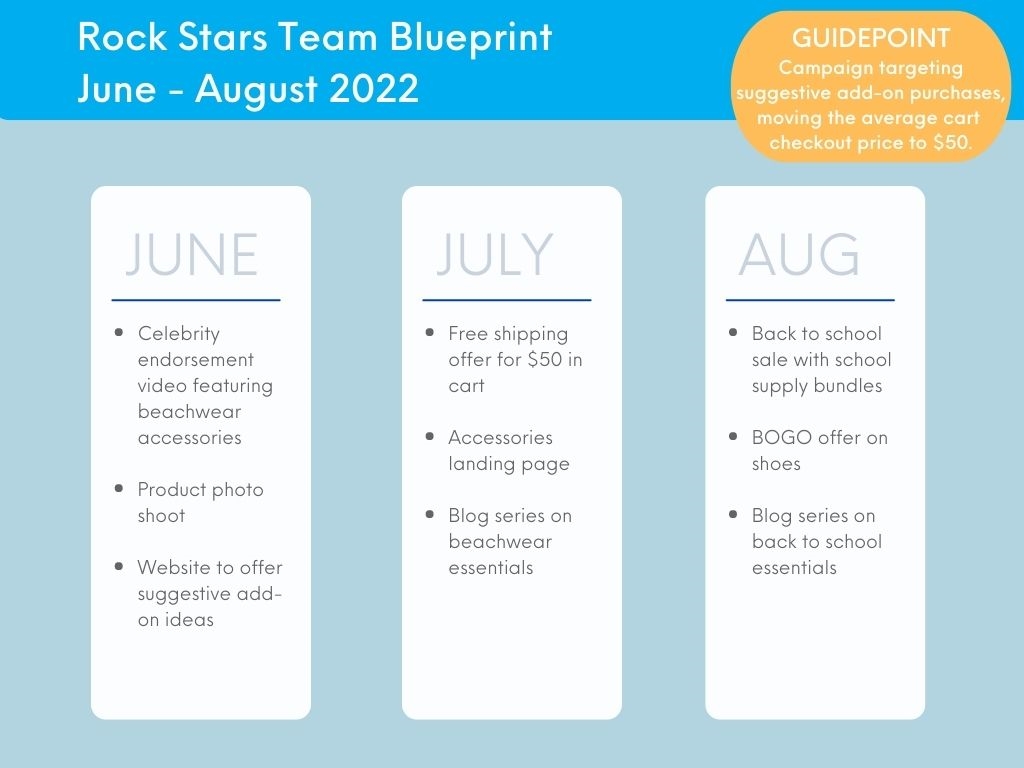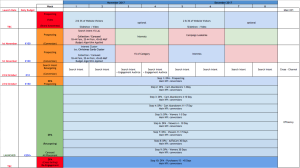A Blueprint easily and effectively communicates the work the agile team has planned with its stakeholders.
We recently introduced you to Agile Marketing Navigator, a flexible framework for navigating agile marketing for marketers, by marketers in the article, A new way to navigate agile marketing. The navigator has four major components: Collaborative Planning Workshop, Launch Cycle, Key Practices and Roles. Within these categories, there are several sub-pieces for implementation. Over the next several weeks, we’ll dive into each piece and give you practical, actionable ways to use them at your company.
The Collaborative Planning Workshop is the first step in your agile marketing journey. Within that, there are four distinct pieces: Guidepoint, Brainstorm, Minimally Viable Launch and Blueprint. Last week we took you through how to determine the Minimally Viable Launch. Now, let’s learn how to create a Blueprint that easily and effectively communicates the work the agile team has planned with its stakeholders.
The Blueprint gets created as a follow-up to the Collaborative Planning Workshop. The Marketing Owner is responsible for its creation and uses it as a frequent conversation tool with leaders and stakeholders to adhere to alignment on the teams’ priorities. Like most things agile, the Blueprint isn’t written in stone but can be modified and adjusted as new business priorities bubble up, as long as everyone is on board and other priorities get dropped.
A big reason that we created the Blueprint in the Agile Marketing Navigator is to empower the Marketing Owner with an easy output that everyone agreed to that’s lightweight enough to change. It also prevents managers from getting too heavily involved in the teams’ backlog and wanting to control every deliverable. As long as they know what the big categories are and when they’re happening, that typically satisfies curious stakeholders while giving the team space to adjust tactics as they see fit.
The Blueprint itself should be created by each team. If there’s a Marketing Owner that oversees several teams, a consolidated version can be created, but each team should have an easy view of the work that’s expected of them.
It’s also important to put in the Guidepoint that everyone agreed they’re working towards. This way, everyone can easily see that the work is (or isn’t) related to where the team is directionally headed.
We suggest that the Guidepoint be no more than a three-month timespan, as priorities change too quickly in today’s fast-paced world, and we want to plan at the last responsible moment with agile marketing.
Within every agile marketing cycle, the team and stakeholders meet to share and get feedback on work, which we call the Team Showcase (more on that to come in a future article). The Marketing Owner should bring the team’s Blueprint at that time to see if the work coming up is still the highest priority for the team, and if not, align on any changes.
Agile marketing is all about flexible planning and frequent communication and collaboration. The Blueprint is just another tool in your toolbox to be able to do both of those things effectively.

The post Getting started with the Agile Marketing Navigator: Creating a blueprint appeared first on MarTech.
(20)
Report Post






